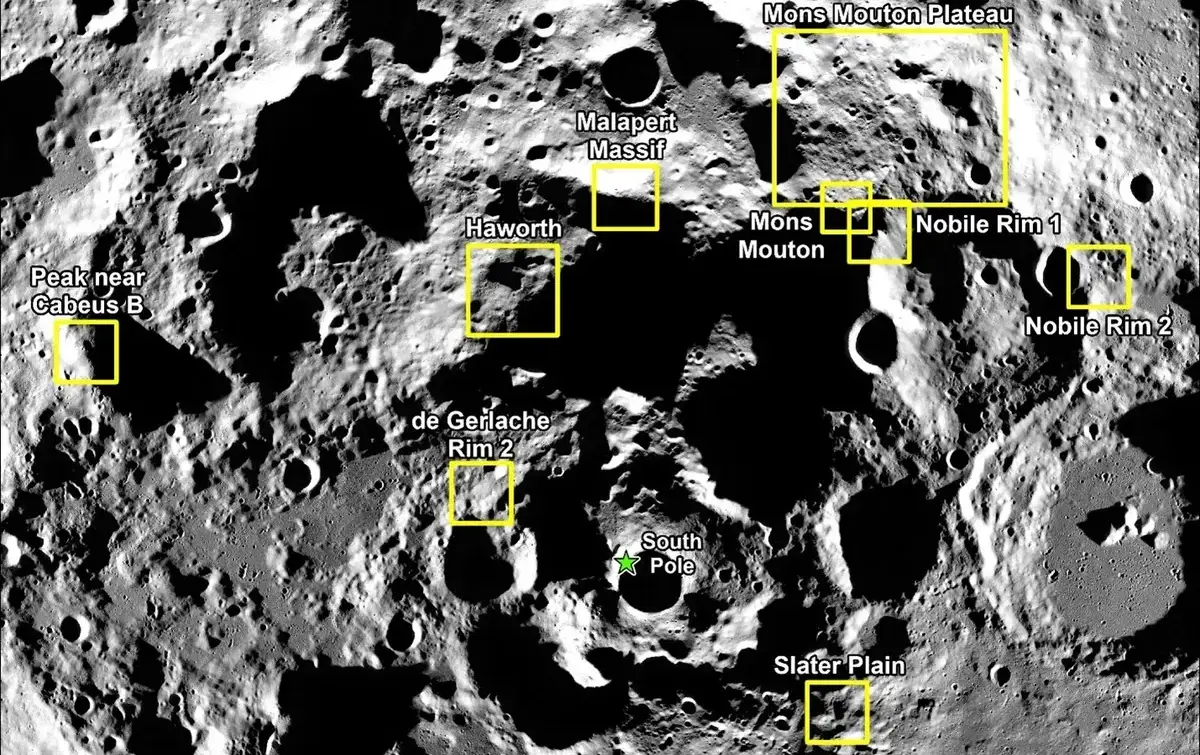NASA updated the list of Artemis 3 landing sites
- October 31, 2024
- 0
NASA has updated the list of candidates to land near the moon’s south pole for the Artemis 3 mission, taking into account surface conditions and the capabilities of
NASA has updated the list of candidates to land near the moon’s south pole for the Artemis 3 mission, taking into account surface conditions and the capabilities of

NASA has updated the list of candidates to land near the moon’s south pole for the Artemis 3 mission, taking into account surface conditions and the capabilities of SpaceX’s Starship lander. NASA announced on October 28 that it had updated positions around the moon’s south pole for the Artemis 3 mission. In August 2022, the agency released a list of 13 potential landing sites.
The nine locations include some of the regions from the previous list, as well as new locations. These are all concentrated near the Moon’s south pole, a region of scientific and research interest due to possible deposits of water ice in permanently shadowed craters.
The analysis requires a “multivariate” analysis, Tamra George of NASA’s Johnson Space Center said in an Oct. 28 presentation about the landing sites at the annual meeting of the Lunar Exploration Analysis Group (LEAG). “Our number one priority is for our astronauts to land and return safely, and this will give us incredible science,” he said.
This required taking into account a wide range of factors. These include illumination conditions and Earth visibility for direct communication with Earth, as well as surface conditions at the landing site within the capabilities of the Starship. This can be “difficult,” he said, especially during the winter months when it can be difficult to find both acceptable illumination and Earth visibility conditions for the planned six-day stay on the surface.
These factors mean that each location is only available part of the time. “We’re going to be pretty tight-lipped” about Artemis 3, he said, “and we expect more infrastructure to arrive for future missions.” This would include relay satellites that would reduce the limitations of direct communication with Earth.
Later in the meeting, when asked why, he said, “We wanted to maintain flexibility in the availability of this mission in case of a possible change in schedule, so we wanted to keep it open longer and not really narrow it down right now.” NASA selected nine locations
Science is also a factor in site selection. “Artemis 3 is still a test flight, but it’s an opportunity to do great science,” Sarah Noble, director of Artemis Lunar Exploration at NASA Headquarters, said at the LEAG meeting. “We can do science anywhere, but some sites are better than others.”
Artemis’ future landing sites won’t be limited to the list compiled for Artemis 3. “Science will guide us in choosing a landing site,” he said of Artemis 4. This will include a preliminary list of 13 sites as well as other potential sites of scientific interest.
Theoretically, this could lead to landings beyond the southern polar region to achieve broader scientific goals. “We are opening the entire surface of the Moon” [Артеміди] 4 and 5,” said Jacob Blecher, NASA’s LEAG principal investigator. “We are 100% aware that we cannot achieve all the goals in one place. “We also understand that some targets require data collected from other locations on the Moon.”
But he added that an early Artemis landing was unlikely to extend beyond the south polar region, citing an architecture that includes an interest in volatiles such as water ice and the use of a nearly linear halo orbit optimized for polar landings. “These first missions, in my opinion, will go to the south polar region,” he said.
Source: Port Altele
As an experienced journalist and author, Mary has been reporting on the latest news and trends for over 5 years. With a passion for uncovering the stories behind the headlines, Mary has earned a reputation as a trusted voice in the world of journalism. Her writing style is insightful, engaging and thought-provoking, as she takes a deep dive into the most pressing issues of our time.